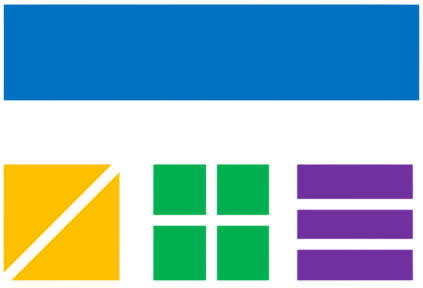Bandwidth Conversion Calculator Information
What is Bandwidth Conversion?
Bandwidth Conversion Calculator is a free, easy-to-use tool that helps you convert between common bandwidth units, including bits per second, bytes per second, megabits per second, and more. Enter a value in any unit, and the calculator instantly provides the equivalent in other units. This tool is ideal for networking, data transfer, internet speed measurements, and IT professionals.
How Bandwidth Conversion Works
Bandwidth is the rate at which data is transferred over a network or communication channel. The most common units are bits per second (bps), bytes per second (Bps), and their multiples. Each unit has a fixed relationship to the others, with bits per second being the fundamental unit.
- 1 byte (B) = 8 bits (b)
- 1 kilobit (Kb) = 1,000 bits (decimal) or 1,024 bits (binary)
- 1 megabit (Mb) = 1,000,000 bits (decimal) or 1,048,576 bits (binary)
- 1 gigabit (Gb) = 1,000,000,000 bits (decimal) or 1,073,741,824 bits (binary)
- 1 terabit (Tb) = 1,000,000,000,000 bits (decimal) or 1,099,511,627,776 bits (binary)
Conversion Examples
1 Gbps = 1,000 Mbps = 125 MBps
1 Mibps = 1,024 Kibps = 128 KiBps
Example: Convert 100 Mbps to KBps and MBps
100 Mbps ÷ 8 = 12.5 MBps
100 Mbps × 125 = 12,500 KBps
Common Bandwidth Units Explained
- Bits per Second (bps): The fundamental unit for data transfer rate, commonly used in networking
- Bytes per Second (Bps): Used for file transfer rates and storage applications (1 byte = 8 bits)
- Megabits per Second (Mbps): Most common unit for internet speed measurements and broadband connections
- Gigabits per Second (Gbps): Used for high-speed networks, data centers, and fiber optic connections
- Kibibits/Mebibits (Kibps/Mibps): Binary-based units used in some technical contexts (1,024 instead of 1,000)
Why Convert Bandwidth?
- Internet Speed: Compare download/upload speeds between different units and providers
- Network Planning: Calculate bandwidth requirements for different applications and users
- Data Transfer: Estimate file transfer times and optimize transfer speeds
- Technical Documentation: Convert between different unit standards used in specifications
- Performance Analysis: Compare network performance across different measurement units
Tips for Accurate Bandwidth Conversion
- Understand the Context: Know whether you're working with decimal (1,000) or binary (1,024) multiples
- Use the Calculator: Avoid manual errors by using the tool for quick, accurate results
- Consider Precision: For network planning, use appropriate decimal places
- Check Units: Make sure you're converting between compatible bandwidth units
- Remember the 8:1 Ratio: 1 byte = 8 bits, so divide by 8 when converting from bits to bytes
Frequently Asked Questions
Q: What is the difference between bits and bytes?
A: A bit (b) is the smallest unit of data (0 or 1). A byte (B) is 8 bits and represents one character of data.
Q: Why do some units use 1,000 and others use 1,024?
A: Decimal units (K, M, G) use 1,000 as the multiplier, while binary units (Ki, Mi, Gi) use 1,024 (2^10).
Q: How accurate is this calculator?
A: The calculator uses precise conversion factors and rounds results to two decimal places for clarity.
Q: What is the difference between Mbps and MBps?
A: Mbps (megabits per second) measures data transfer rate in bits, while MBps (megabytes per second) measures it in bytes. 1 MBps = 8 Mbps.
Q: Can I convert between bandwidth and storage units?
A: This calculator is for bandwidth (data transfer rate) only. Storage units measure capacity, not speed.
Q: How many bits are in a megabit?
A: 1 megabit (Mb) = 1,000,000 bits (decimal) or 1,048,576 bits (binary, Mib).
Important Disclaimers
Disclaimer: This calculator provides estimates for educational purposes only. Conversion factors are based on standard international definitions.
For critical applications such as network planning, data center operations, or telecommunications, always verify results with professional measurements and consult with qualified IT professionals.
This calculator is not a substitute for professional network analysis or telecommunications engineering. Always use appropriate precision for your specific use case.
